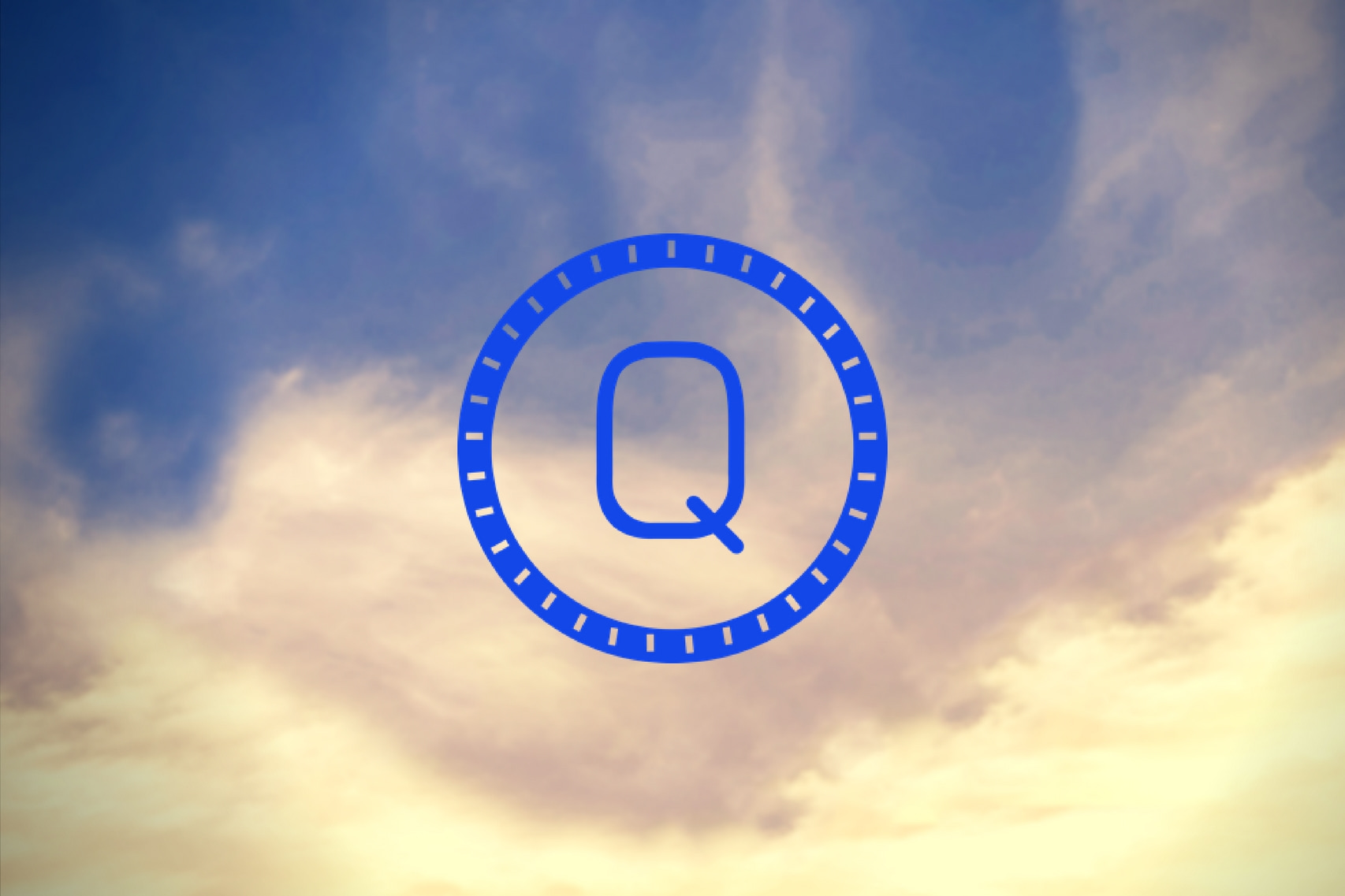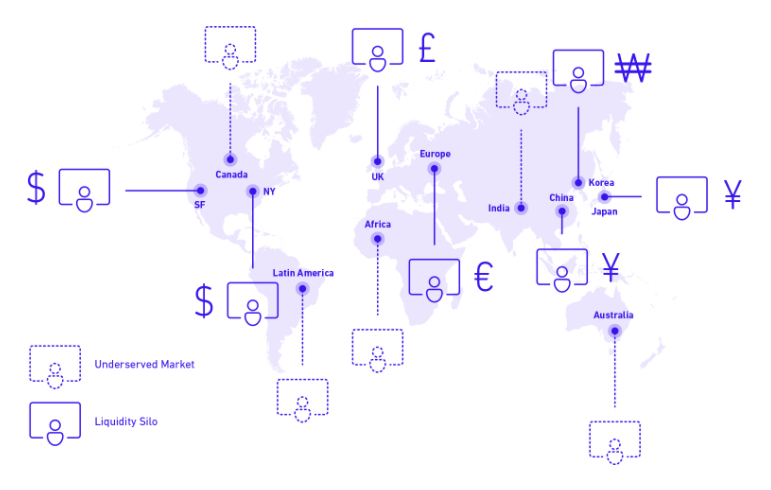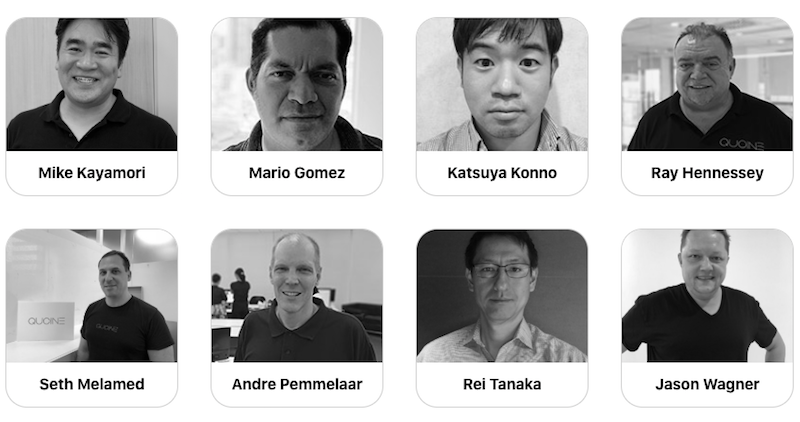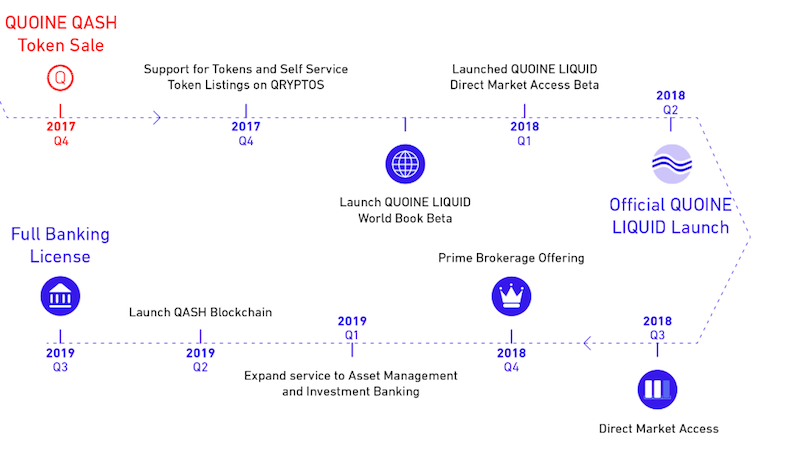Traditionally, big institutions received privilege to invest first (and benefit most) from all asset classes. Then us measly retail investors fight over the scraps.
We’re seeing the opposite drama play out in the crypto space. Forward thinking (or idealistic) retail investors were the first to invest while institutions were left on the sidelines.
However, it appears this golden period may be coming to an end as financial institutions and governments finally realized they better get in on the action.
The tricky part is, governments and big banks only like to play games that are rigged in their favor. Will they really just sit back and let us “decentralize the world”? While I wish this were true, it’s highly unlikely.
Governments and global financial institutions still retain the vast majority of power and resources. A crypto future threatens their very existence, so we should expect these institutions will come out swinging. They will likely create their own centralized digital currencies, manipulate markets, attack decentralized projects with regulations and FUD, and more.
Eventually, however, governments and banks will realize decentralized currencies like Bitcoin (and others) are here to stay and they will FOMO into the space. When these institutions finally start purchasing cryptocurrencies, the incoming flood of capital is going to make the runup in December of 2017 seem insignificant.
Straddled right between the “decentralize the world” ethos and the global financial elites sits a company called QUOINE who created a token called QASH.
The team behind QASH believes they struck a balance between trying to democratize access to the new financial system, while necessarily playing by the rules of the old guard.
Their first priority is becoming the dominant financial services platform for institutions (and startups) to access the crypto market.
I’m excited to present this project as I believe it’s both interesting and extremely undervalued. If the team behind QASH achieves their vision, I believe QASH could become a top 10 project by 2020.
Let’s dive in.
Company History
The QASH token was created by a company called QUOINE, headquartered in Japan.
QUIONE was founded by veterans of the banking industry, Mike Kayamori and Mario Gomez Lazada. Although the company was founded in early 2014, the QASH token sale wasn’t completed until Q4 2017.
Compared to many exchanges/projects who play “cat and mouse” with the law, QUOINE is taking a different approach—aka playing by the rules.
They are the first cryptocurrency firm in the world to be officially licensed by the Japanese FSA. They receive regular financial audits from Deloitte and 100% of their users must satisfy KYC/AML regulations. The QUOINE team believes this is a strength, because the non-legal, non-regulated exchanges are heavily targeted and run the risk of slipping up.
QUOINE has offices in Japan, Singapore, and Vietnam. They employ over 60+ people.
QASH is Solving a Real Problem: Lack of Liquidity
Liquidity is the lifeblood of any enterprise, market, and our global economy. In fact, the 2008 financial crisis was initially triggered when BNP Paribas suspended liquidation of three of its money market funds citing illiquid markets. This lead to a run on Bear Stearns and Lehman Brothers ending in their demise.
In the traditional finance world, the big banks (Goldman, Citibank, etc) provide the vast majority of liquidity. QUOINE is trying to play the same role (offering liquidity) to the entire crypto market.
From the whitepaper:
In a sense, the various cryptocurrency exchanges are Liquidity Silos. They are liquid in some pairs, but their liquidity is only accessible to clients of that exchange. And while most of the exchanges offer liquidity in certain highly liquid currencies (USD, EUR, CNY, JPY, etc.), there is no convenient and highly-liquid on-ramp into the Crypto world for holders of minor currencies such as CAD, NZD, SGD, PHP, IDR, etc. Separately, each market’s liquidity remains small, but collectively they represent a large untapped source of liquidity that now desperately wants an on-ramp into the Crypto world.
The cryptocurrency market is growing rapidly, but it’s still a vulnerable infant. Without the necessary liquidity, many crypto projects take on potentially catastrophic risk.
Some projects keep their capital tied up in a specific token, and if there isn’t enough liquidity to buy/sell this token in times of need, they could see huge problems.
The QASH Token
QASH is a utility token used by the Liquid+ platform to pay for prime brokerage services and trading fees. After thorough research, I believe the Liquid+ platform is a game-changer in the crypto space but requires significant effort to fully comprehend.
QASH will initially be created as an ERC-20 token. However, by Q2 2019, QUOINE will launch their own blockchain. The purpose is to leverage a blockchain that is well suited for the unique requirements of the financial services industry.
This allows other financial institutions (and startups) to build decentralized applications on top of the QASH blockchain. According to the whitepaper, the QASH blockchain will natively offer:
- KYC/AML
- Node Management (Region Restrictions)
- Financial Service Features
- a) Credit / Lending Management
- b) Market Data Distribution
- c) Margin Management
- d) Matching Engine
- e) Market Making Engine
- f) Issuance of new Crypto Tokens
- g) Banking
If this is realized, the QASH token will be used by an entire ecosystem of financial services.
The Liquid+ Platform: The Exchange For All Exchanges
QUOINE is replacing their two former exchanges (QRYPTOS and QUOINEX) with the newly designed and full featured Liquid platform.
Our LIQUID platform which aggregates all major exchanges in the world to one single trading platform, combined with the prime brokerage service, will allow everyone in the crypto space to benefit and contribute to LIQUIDITY. – Mike Kayamori, founder and CEO of QUOINE
The CEO, Mike Kayamori, believes all the crypto exchanges need to work together in order to create a global liquidity pool large enough to service the market’s ever-evolving demands.
The Liquid platform serves as the inter-bank for all of crypto—in other words, “the exchange for all exchanges.”
For example:
- Let’s say Binance sees high demand of a specific digital asset. Instead of shutting down trading (which could cause a panic), they can temporarily borrow liquidity from Bittrex through the Liquid Platform.
- When brokerage services like Fidelity start offering their users the option to trade Bitcoin, where will they get the liquidity to support this? From the Liquid Platform.
Key Feature #1: World Order Book
The vision for World Order Book is to aggregate every order books from all exchanges around the globe into a single pool of liquidity accessible through a single platform, Liquid.
Currently, there are 17 exchanges partnered with QUOINE on this endeavor (3 US exchanges, 2 from the EU, and the rest scattered around the world.)
Highly Scalable Matching Engine
In order for the World Order Book to be successful, the liquid platform will be required to support a wide range of trading pairs that span both cross-currency and cross-platform.
Luckily, the QUOINE team has built their own matching engine from scratch by combining decades of experience in fintech. They claim the matching engine is capable of processing several million transactions per second, making it one of the most advanced on the market today.
Key Feature #2: Prime Brokerage Services
QUOINE offers a suite of services that provide users with tools to increase ROI and reduce counterparty risk.
Most notably, users can use Liquid as a “single sign-on” platform to trade directly on any global exchange without having an account or funds on those exchanges. (Yes, please!)
Since Liquid users will only ever need to deal with QUOINE, this dramatically reduces their counterparty risk. QUOINE is currently legal and regulated in Japan. This is becomes very appealing if you’re a large financial institution who is required to work with other regulated enterprises.
They’re also working on a fiat transfer optimization service. According to their whitepaper, it “will allow us to complete immediate fiat transfers globally” which would greatly benefit a global liquidity provider handling various different fiat currencies around the world.
Key Feature #3: Fiat Gateways
QUOINE has built banking relationships in markets previously underserved by the crypto community. They plan to offer fiat gateways with Japan, Europe, USA, Singapore, Philippines, Indonesia, Taiwan, and more.
Together this will greatly increase the liquidity pool by increasing the number of people and amount of capital that can participate in the crypto markets.
The Team Behind QASH
The team is full of big players from the banking and technology industries.
The business strategy is anchored by co-founder and CEO, Mike Kayamori. Mike was a SVP at SoftBank group, the chief investment officer of Gungho Asia, and has held senior position in SIlicon Valley VC funds. He’s a capable leader with a likable personality who keeps the community up to date with weekly updates.
The technology division is lead by co-founder, president, and CTO, Mario Gomez Lozada. Mario is the former CIO of Credit Suisse where he oversaw fixed income, currency, and commodity businesses which resulted in developing close relationships with local regulators in Japan. Mario also served as the CTO of Merrill Lynch in Japan.
The QUIONE team has already created a successful cryptocurrency exchange (QUOINEX) which is promising since they’re about to launch a next-generation crypto-financial platform.
Roadmap
The Liquid platform is scheduled to be released at the end of May or early June 2018. During the remainder of 2018, they will slowly roll out features such as UI/UX improvements and their Prime Brokerage services.
The launch the QASH blockchain is scheduled for Q2 2019, and soon after that they hope to acquire their full banking license.
After launching the QASH blockchain, the QUOINE team will start whitelabeling their trading platform to other enterprises and local market makers. This would allow smaller markets (Philippines, Indonesia, etc) to create local fiat gateways while simultaneously contributing and accessing the global liquidity pool created by the World Order Book. Each of these whitelabled enterprises will use QASH as the native token.
Blockchain or Hashgraph?
In a recent AMA interview,CEO Mike Kayamori said:
There’s no blockchain we could migrate our services onto that can be used for financial services. We need high frequency, high performance, and low latency.
This makes sense as currently we don’t have a commercially scalable blockchain that could support the vision of the QASH team today. He goes on to mention Hashgraph as a potential technology to house the QASH token.
Risks, Challenges & Competitors
The QASH project is highly dependent on a few key drivers: favorable regulations, institutional support, and a meaningful implementation of their own blockchain (slated for 2019).
QASH is taking the pro-regulations approach which they claim is one of their biggest strengths. However, it also exposes them to the risks associated with an ever changing geopolitical climate and the regulations that follow. Will QASH be able to acquire the necessary banking licenses? Will Japan continue to support the project? I’m confident in the team, but the project is subject to forces out of their control.
QASH is taking the necessary steps to garner support from large institutional investors, namely: staying compliant and regulated, offering prime brokerage services, and eventually “whitelabeling” their global liquidity pool.
However, global financial systems are under pressure to change, and we don’t know how institutions will respond. What happens if the old guard decides to builds their own infrastructure instead of leverage platforms such as Liquid?
Certainly Nasdaq would consider becoming a crypto exchange over time. – Nasdaq CEO Adena Friedman
Lastly, in order for QASH to truly achieve their long-term vision, they will need to successfully implement their own blockchain. According to the roadmap, this is slated to launch in Q2 of 2019.
I’m mildly concerned that they haven’t decided what technology they’re planning to build on. The CEO mentioned HashGraph because “no other blockchain can handle their demands.” While I don’t know if that is true, there is a lot riding on solving that problem and the clock is ticking.
Success or Failure of the QASH Token
The CEO predicts that “regulated tokens” will be in high demand in the future and that QASH will become a top 5 token.
Short/medium term, the success of the token will be based on Liquid becoming the main platform for institutional trading and for financial institutions leveraging liquidity from The World Book.
There is no way Goldman Sachs traders will use EtherDelta to trade crypto. They will work with a regulated exchange with the most liquidity. Liquid has a good chance of becoming the institutional platform of choice which would make the QASH token increasingly valuable.
Long term, the success of the token will depend on the launch of the QASH blockchain and how many projects build on top of it. If we see a significant percentage of global financial services being built on QASH, the token will explode in value.
QASH is well positioned to take advantage of the growing trend of Institutional investors entering the space.
How to Buy and Store QASH
The easiest way to acquire QASH is to sign up for the Huobi exchange which has roughly 50% of the total trading volume.
QASH is currently an ERC-20 token which allows you to store it any way you would store another ERC-20 token. This includes My Ether Wallet (MEW), Ledger, etc.
Final Thoughts
The team behind QASH is solving an immediate need (lack of liquidity). They’re preparing to facilitate institutional investors from Goldman Sachs and others. In 2019, they launch their own blockchain allowing additional financial services to be built on top while still requiring the usage of the QASH token. They’re also playing with regulators which could be a highly beneficial strategy.
If the team behind QASH can pull it off, they will become a dominant player in the market for years to come.
Disclosure: I own QASH tokens and this is not intended to be financial advice. Do your own research before investing in anything.






